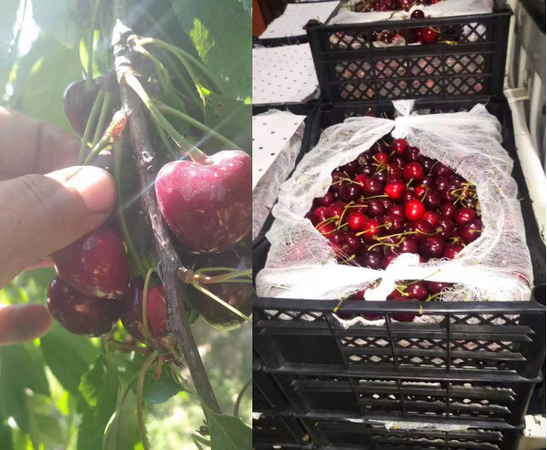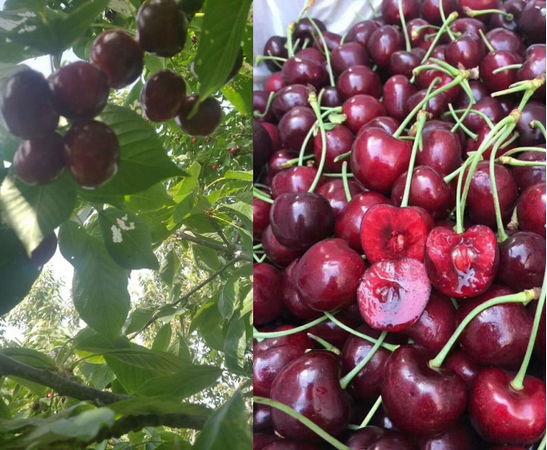Central Asian cherries entered the Chinese market for the first time in 2019. The origins include Uzbekistan, Kyrgyzstan and Tajikistan, with Uzbekistan having the largest production and import volume. In May of this year, Central Asian cherries returned to the Chinese market after the pandemic.

"Uzbekistan's cherries production season is from May to the end of June and the beginning of July, which matches Chinese "5.20" and "6.18" e-commerce promotions. The main consumption areas are Guangdong, Zhejiang, Fujian, Shanghai and other places." Zhejiang Feishina E-Commerce Co., Ltd.(CatikeExpress) is the exclusive agent for the first export of Uzbekistan cherries to China in 2019. Mr. Zhu Jianfeng, from the company, introduced the relevant information and development opportunities of imported cherries from Central Asia.
 "Uzbekistan is rich in cherries, and they are grown naturally without preservatives. The mainstream variety "Bull's Eye" is dark purple in color and has the characteristics of large size, high sweetness, green branches, and good hardness. It is produced in summer so does not compete with Chilean cherries. The quality is good and the price is relatively low, which is the competitive advantage of Central Asian cherries. On the other hand, most of the local orchards were small orchards until imports started to grow, and they lacked experience in post-harvest treatments, including disinfection and preservation, equipment and procedures, so the overall process needs to be improved. Our commitment to freshness is two weeks."
"Uzbekistan is rich in cherries, and they are grown naturally without preservatives. The mainstream variety "Bull's Eye" is dark purple in color and has the characteristics of large size, high sweetness, green branches, and good hardness. It is produced in summer so does not compete with Chilean cherries. The quality is good and the price is relatively low, which is the competitive advantage of Central Asian cherries. On the other hand, most of the local orchards were small orchards until imports started to grow, and they lacked experience in post-harvest treatments, including disinfection and preservation, equipment and procedures, so the overall process needs to be improved. Our commitment to freshness is two weeks."
Central Asian cherries are mainly imported by air. Zhu introduced the challenges and opportunities in logistics: "Currently, the number of flights and freight capacity between China and Uzbekistan is limited. It can be transported to Xinjiang by land, but it will take time to reach the various parts of China. The China-Kyrgyzstan-Uzbekistan Railway may provide more opportunities for Central Asian cherries. The railway takes Tashkent as a transit point, and after completion, it will greatly improve efficiency, and can provide refrigerated carriages, which is good news for the import and export of agricultural products that need a cold chain.”

In terms of market performance, Zhu said that the development of Chinese cherries has had an impact on Central Asian cherries. "Chinese cherries are close to the production season of Central Asian cherries, and they are strong competitors. When first released in 2019, Chinese cherries had not yet fully developed, but in recent years, the cultivation of cherries in Shandong, Dalian, Shaanxi and other places has developed rapidly. And the quality has improved, the freshness is high, and the price is lower than that of imported cherries. Domestic growers are working hard to develop varieties that suit the taste of local people. It has an impact on the imported cherries that were launched in the same period. With the development of Chinese cherries, the market for imported cherries may gradually shrink."
The company is engaged in the import and export of commodities between Central Asia and China. It has cold storage and factories in Uzbekistan, equipped with assembly lines and sub-packaging lines.
